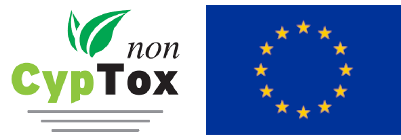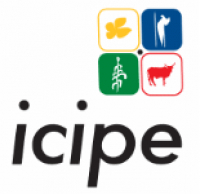The Project
Introduction & Objectives:
CypTox – A Step Towards Safer Insecticides
Insect-borne diseases and crop pests continue to threaten global health and food security. While insecticides have saved millions of lives, rising resistance and limited low-risk options demand urgent innovation.
💡 CypTox’s Mission:
CypTox harnessed advanced biotechnology to target the cytochrome P450 (CYP) detoxification pathway—developing next-generation insecticides that are both highly effective against pests and safe for pollinators, humans, and the environment.
🔧 What We Achieved:
-
Designed high-throughput enzyme/cell screening tools and in silico platforms for smart insecticide development.
-
Delivered robust training, industry-academia mobility, and innovation-ready tools for resistance management.
-
Built a strong academic-industry-global partner network, enabling real-world impact and career development.
🎯 Objective:
To exploit CYP pathways for highly selective, resistance-breaking insecticides, making pest and vector control more efficient, sustainable, and safe.
Current phase of the project: Reporting Period 2 – Final Reporting Period
Secondments progress:
152 secondment months were implemented
Training Events progress:
Over the course of the CypTox project, a total of 5 major training events were organized, including 2 hands-on practical courses, 2 thematic workshops, and 1 interactive e-learning capsule developed by Syngenta. In addition, secondments included on-site training sessions at academic and industrial host institutions (e.g., Syngenta, EnzyQuest, Bionos, MAGMA), covering good laboratory practices, biosafety, and specialized technical skills. These activities provided comprehensive career development and technical upskilling for all seconded researchers.
Technical progress
🚀 CypTox Project – Final Results at a Glance
In its final phase, CypTox successfully delivered on its promise to develop safe, selective insecticides by harnessing cutting-edge biotechnology. Over 150 secondment months boosted collaboration between academia and industry, powering innovation across sectors.
🔬 Key Results:
-
Built a curated CYP gene database and confirmed detoxification roles using advanced reporter systems and field samples.
-
Developed functional CYP-based assays, stable insect/mammalian cell lines, and scalable expression platforms.
-
Discovered natural synergists like curcumin and validated selective pro-insecticides through in vitro and in vivo profiling.
-
Tested lead compounds on pests and vectors in bioassays, confirming high efficacy and low non-target toxicity.
📚 Training & Impact:
CypTox delivered 5 major training events, a public e-learning capsule, and strong outreach via workshops, conferences, and public science events—leaving a lasting legacy in safe pesticide development.
SUPERPESTS
Web site: https://superpests.eu/
CropLife
Website: https://croplife.org/
ECPA
Website: https://www.ecpa.eu/
OPTIMA
Website: http://optima-h2020.eu/
NOVATERRA
Website: https://www.novaterraproject.eu/
ISIDORe
Website: https://isidore-project.eu/
INOVEC
A research and InNOvation Partnership for enhancing the surveillance and control of mosquito VECtors of emerging arboviruses
MicroBioPest
Microbial Biopesticides to Control Disease Vectors and Agricultural Pests
RATION
Risk AssessmenT InnOvatioN for low-risk pesticides
UniHealth
Development of a global diagnostic ecosystem for detecting and monitoring emergency-prone pathogens across species and in a unified way.
NextGenBioPest
Next Generation BioPesticides for the control of the most “difficult-to-manage” pests and pathogens in fruits and vegetables
https://www.nextgenbiopest.eu/
Overarching Objective of the CypTox is to exploit the primary P450-based metabolic pathway of target and non-target organisms, for the development of highly selective, safe insecticides and new resistance breaking formulations, to improve the efficiency and sustainability of pests and vector control.
Some of the most acute challenges that the world faces now and in the foreseeable future are caused by insects and mites that seriously threaten human health and food security. Their control is primarily achieved by the use of insecticides: for example, malaria prevalence has halved since 2000, saving 660 million lives, with 80% of the reduction being attributable to the use of insecticides. However, both the limited availability of low risk insecticides and insecticide resistance represent a major threat, and there is an urgent need to develop new insecticides. CypTox will apply biotechnology excellence to exploit the cytochrome P450 (CYP) metabolic/detoxification pathway of target and non-target organisms, to develop novel insecticides, efficient against selected insect & mite major pests and vectors, but are highly selective and safe for mammals, pollinators and the environment. Outcomes will also include biotechnology-based platforms (high-throughput cell/enzyme- screening assays and in silico pipelines), in line and beyond Pharma state of the art, that will advance research capabilities, for future developments of low risk insecticides. CypTox will provide excellent research training within a creative and flexible environment that actively promotes the integration of academic rigor and commercial pragmatism through mobility between sectors and focused training events. The size and balance of a highly motivated consortium (6 academics/6 industrial in EU and 3 TC partners; 300 well distributed secondments), the involvement of experienced PIs in Horizon 2020 and ERC projects and the modern communication, dissemination and exploitation approaches of CypTox will ensure efficient implementation and impact, at several levels. Enhanced career perspectives for scientists and researchers will be achieved by building on a sustainable multidisciplinary and inter-sectoral network in a wide range of fields, with the integration of world leading researchers and stakeholders.



















